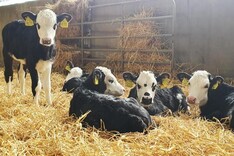Weaning management
Table 1 details a guideline of optimum weaning dates based on a 14 week lactation period. The basis behind weaning at 14 weeks is that at this stage of lactation, lambs are receiving very little from milk yield and ewes are competing with lambs for the best-quality grass.
Weaning reduces grass demand greatly, as a ewe’s intake requirement reduces from upwards of 2.5kg grass dry matter (DM) per day to 1.2kg to 1.3kg DM per day.
Delaying weaning to get an additional draft of lambs away is ok where there is surplus good-quality grass on farm and there is no competition for this grass.
The kill-out potential of lambs will typically fall by 1% to 2% following weaning, with a check in performance inevitable with the exception of lambs on a high level of creep feeding.
Abrupt weaning is typically the preferred option. While it stimulates higher stress levels at the outset, this is typically shortlived, and the big advantage is being able to prioritise the best quality grass available for lambs while streamlining management practices.
Gradual weaning, whereby a number of ewes are removed from the flock on a continual basis such as every few days for example, will lower lamb stress levels.
However, the merits of lower stress levels are frequently negated if lambs are competing with ewes for the best quality grass, and the check in performance is possibly exaggerated as a result.
Selecting replacements
Weaning is also a good opportunity to provisionally select replacements if not already complete. This avoids replacements, with the best genetics leaving the flock through the first few drafts of lambs.
The ideal selection policy is basing decisions on the back of a lamb’s own performance and background breeding data, linking lambs back to their ewe and sire.
It is also best to initially select 10% to 15% more replacements than required to allow for further selection based on performance post-weaning.
Lamb castration
Decisions on lamb castration should take in to account the age of lambs, their condition, lamb finishing plans and the target market.
Forward ram lambs that have progressed beyond the optimum timeframe for castrating may be better finished by batching and targeting such lambs with a higher level of nutrition.
Under the Bord Bia Sustainable Beef and Lamb Assurance Scheme, lambs can only be castrated with a burdizzo up to three months of age.
With regards castration, it is advisable to administer clostridial disease vaccination to lower the risk of tetanus.
Be careful when castrating to avoid catching the urinary tract when closing the burdizzo – clamp the jaws shut and release immediately without overlapping the castration site on each side. Delayed opening or longer-term closure can lead to extra injury and swelling. Remember blowfly prevention as lambs will spend longer lying and be more prone to flystrike.






 This is a subscriber-only article
This is a subscriber-only article










SHARING OPTIONS: